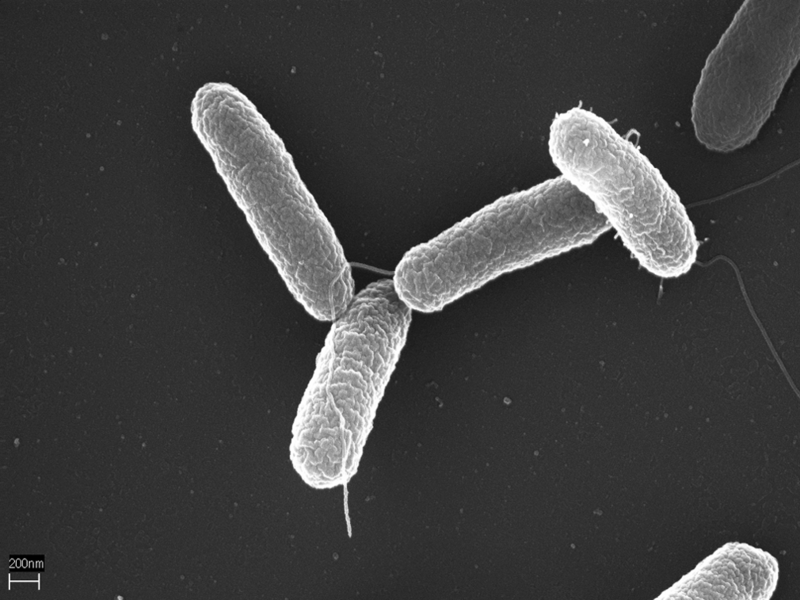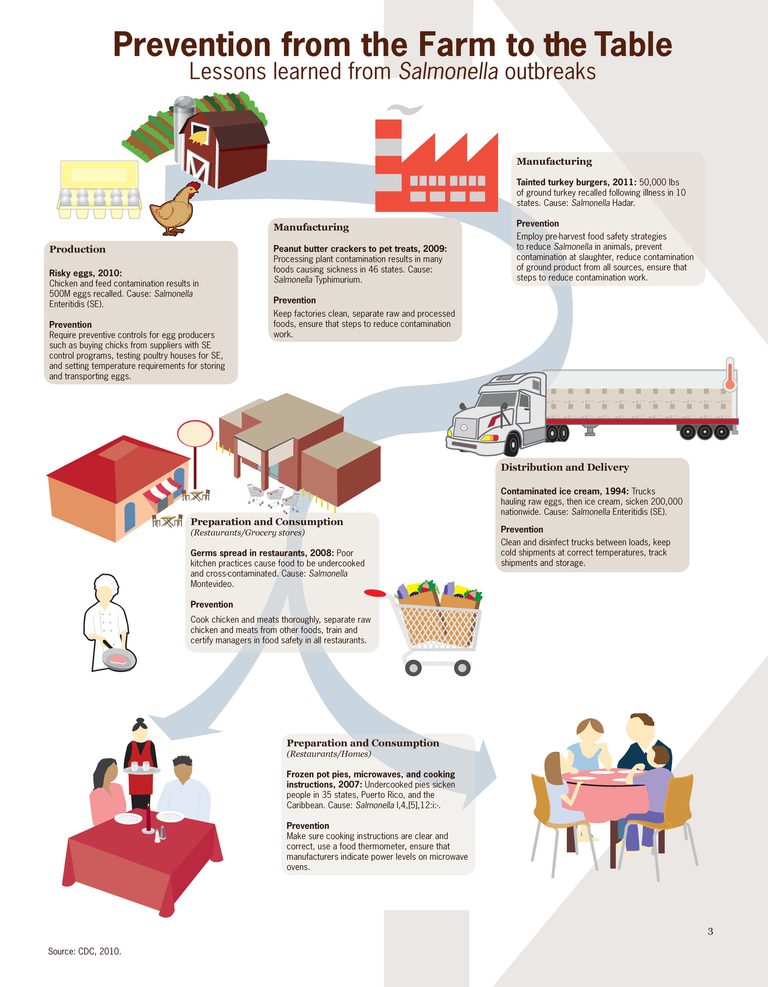So many organism living with humans can be beneficial or dangerous to humans, the expense of one's healthy life to become hazardous is called DISEASES.
This period of disease in a human or a living animal creates a condition which impairs the normal functioning body of a living being by making manifest with signs and symptoms of that particular disease.
Hello lovely ones of this amazing community, today I intend to discuss on the damages of salmonellosis which are life threatening when it turns into a severe disease to human, its prevention and its solution (treatment).
Most disease can be gotten through food poisoning or food infection,one may get confused on the terms or ask "don't they have the same meaning but different terms?" -> Absolutely YES they dish out same definition,in view they both have different means to breed diseases to man.
In essence,it means Food infections is whereby toxins from bacteria or viruses or fungus are deposited in a food before it's consumed WHILE Food poisoning is termed as the release of toxins inside the body system after the consumption of micro organism through food or water(anything consumable). So
Salmonellosis can be gotten either through food poisoning or food infection.
Let's take a look at the epidemiology
Salmonellosis is caused by the genus called "SALMONELLA",they are gram-negative rod shape bacteria, from the family of Enterobacteriaceae

Salmonella and its flagella for movement
They are facultative organisms because it can survive in the presence of oxygen i.e Aerobic respiration and also can survive without oxygen (Anaerobic respiration)
It's facultatively characterized by a motile flagellated bacilli of "O"(gotten from it's somatic cells) & "H" (gotten from it's flagella)antigens with it's common serovars A,B & C out of 2500 serovars(also named serotypes of the bacteria that develops in the intestines and combines with the human blood causing impairment of the body system).
Serovars are unique set of Antigens based on the cell surface of a specific micro organisms(SALMONELLA)
Salmonella has two common species known to man,thus are; Salmonella Bongori- infects only cold blooded animals While Salmonella Enterica- infects only warm blooded animals for which infects or poisons man mostly.
Clinically, we re basically focusing on the Salmonella that affect warm blooded animal (consisting of man and living animals), Salmonella enterica pastures in man causing gastroenteritis;whereby one suffers from diarrhea, abdominal cramps and vomiting to Enterica Fever ;where humans exhibit Typhoid fever & Paratyphoid fever triggered by "Salmonella Typhi et Salmonella Paratyphi".
It's important to distinguish between typhoid fever and paratyphoid fever because the strains in the two organisms brings on two different diseases by exhibiting various propensities to develop resistance to antimicrobial drugs if given randomly,that is why there's diagnostic kits and tools today to differentiate as well identify the specific fever disease between the two and administrating specific drugs for it.
Generally, children(whose immune system are still developing), elderly ones( ranging from 70 and above whose immune system are weak) and those with weakened immune system,thus their leukocytes are unable to fight against disease that comes into the body system,these ones are called the Immunocompromised patients such people as follows;- HIV patients,organ transplant paitents, chemotherapy patients etc.
All these people are susceptible to salmonellosis due to the strains of enterica salmonella is known to breed heat stable enterotoxins to the target of human intestines.
The typhi's of salmonella enterica subspecies S.Typhi & S. Paratyphi we are talking about are acquired from contaminated food and water, unhygienic environment and carriers of typhoid (they are asymptomatic people who doesn't show signs and symptoms of typhoid but sheds the diseases from their wounds,tissues, organs,stool and urine).
In this scenarios,when this bacteria or it's toxins from the food are ingested or consumed by a healthy individual,the known bacteria penetrates through the gastric acid barrier using the attachment of their pilli or flagella to Peyer's patches epithelial cell lining of the intestinal lumen.
These bacteria with either Salmonella serovar typhimurimum and Salmonella serovar enteritis gets internalized by receptor- mediated endocytosis and are phagocytosed to the lamina propria where the toxin are released, the toxin known is called S-CDT-> SALMONELLA- CYTOLETHAL DISTENDING TOXIN.
The incubation period of the toxins is between 12-24hrs in the lamina propria,whereby the toxins gets induce with an influx of macrophages (having typhoidal strains) & neutrophils (having non-typhoidal strains) after the invasion, the cells spikes the discharge of pro-inflammatory cytokines in an inflammatory responses which is noted as SIGNS AND SYMPTOMS to man.
One can be in possession of Salmonella Bacteria in their body ranging a from some hours to some period of days before showing its symptoms,once Salmonelosis takes hold,you ll start experiencing symptoms rather suddenly leading to the elevation level of CAMP creating an intensified production of electrolytes outwardly from the body with the demonstration of Consistent vomiting, Dyschezia, Acute dysentery, Anorexia(Loss of appetite), Muscular weakness, Ulceration, High fever, Gastralgia(Abdominal cramps), Muscular weakness, Migraine etc.
DIAGNOSIS-
The analysis of salmonellosis is achieved by isolation of the organism in the food or from faecal materials from humans, contaminated water or other suspected sources.
As Oracle of medicine (scientist) various tests are carried out for Salmonellosis confirmation through- Stool sample,the test is carried out by confirming the macroscopy of the stool specimen, it's culture and sensitivity. The culture/sensitivity is achieved in called Bismuth Sulphite Agar which is the best for culturing Salmonellosis. The growth appearance on the agar and it's colour(Black with metallic sheen),with a gamma hemolysis.
Salmonellosis On Agar Plate & Showing positive sulfide test
Commercial prepared antisera "O" & "H"(with colour blue and pink respectively depending on the manufacturer) are produced by rocking with the patient's serum which is done for the identification degree level of Salmonellosis recorded as in 20,40,80,160 depending on it's agglutination.
Practically for an easier and fast confirmation, Rapid immunological tests has been evolved for the identification & confirmation tests for salmonella enterica such as ELISA (Enzyme- linked immunosorbent assay), Latex agglutination, lateral flow strips etc.
Also vast methods are also deployed like molecular methods such as DNA hybridization and PCR (Polymerase Chain Reaction)are made obtainable, accessible for the identification and to accredit the presence of salmonella enterica in human specimen leaving zero error.
Series of biochemical tests are carried out too for further salmonellalosis confirmation from stool culture or bacteriemia blood culture with a seemly results of Catalase - positive, Citrate - negative, Peroxidase - negative, Methyl red - positive, Hydrogen sulphide - positive, urease - negative, MUG - negative, etc.
PREVENTION-
There are so many measures to partake inorder to minimize the exposure of salmonellalosis;
Contaminated water by dirty animals through their fecal materials into the water,this should be avoided or purified before drinking or cooking.
Contaminated foods such as veggies,raw red meat and fruits etc should be thoroughly washed,cooked properly if need be before consumption & also avoid undercooked foods too.
Unpasteurized milk should not be consumed because it can contain various pathogens that re dangerous to man not only Salmonellosis so therefore must be pasteurized before consumption.
Hivers, always look out for packed foods for it's expiring dates because expired packed foods from the groceries stores may contain this particular bacteria in them.
Avoid anal sex totally because this route transmission of salmonella gets into the body system easier due to direct contact of the mouth to anus where faecal are deposited out.
Sub clinically sick persons or carrier workers should not be employed in food establishments like restaurant,bakery etc also symptomatic person's should not prepare food for others.
This tips helps to avoid contracting from affected persons and avoid transmitting to others.
TREATMENT-
There are signs and symptoms such as nausea, headache etc that are treated in non- invasive and uncomplicated cases by taking slots of water and other fluids.
Anti- diarrheal cases like Loperamide can be administrated in severe diarrheal cases. Antibiotic could also be administrated by thorough check of performing Antibiotic Microbial Sensitivity - to help indicate which specific antibiotic either ciprifloxacin, azithromycin,fluoroqunioloes etc.
This is sensitive to the degree of the causative pathogens by using KIRUBAR DISC, which is recommended or applied in the cases of septicemia or bacteremia cases because in this scenario there's increase of faecal shedding of the specified organism, furthering can prolong transmission.
So hivers,it's ideal to get smithen with the preventions of salmonellosis than putting your health at a very big risk of this organism. One who has been affected by this organism, should not be dismayed because there's a solution to it.
Reference:
https://www.cdc.gov/Salmonella/general/Salmonella_symptoms....
https://pubmed.ncbi.nim.nih.gov/34017923
https://www.nvidia.com/en-us/geForce/forums/discover/165090




Thanks for your contribution to the STEMsocial community. Feel free to join us on discord to get to know the rest of us!
Please consider delegating to the @stemsocial account (85% of the curation rewards are returned).
You may also include @stemsocial as a beneficiary of the rewards of this post to get a stronger support.
Congratulations @bloomcindy! You have completed the following achievement on the Hive blockchain and have been rewarded with new badge(s):
Your next target is to reach 900 upvotes.
You can view your badges on your board and compare yourself to others in the Ranking
If you no longer want to receive notifications, reply to this comment with the word
STOPCheck out the last post from @hivebuzz:
Support the HiveBuzz project. Vote for our proposal!
Thanks for sharing this super interesting blog with us. I didn’t know there was a difference between food poisoning and food infection, and I had never heard the term ‘facultative organism’. I hence learned something from the very first paragraphs of this post. That's great! :)
I know have a real question, related to the treatment of the disease discussed. I have the impression that everything you mentioned is related to the treatment of the symptoms consequent to being infected. However, it there anything else that could be done to get rid of the bacteria themselves? I am thinking for instance to antibiotics.
Thanks in advance for enlightening me!
One can get rid of the bacteria accurately through antibiotic therapy,this is done in the laboratory...
In essence this therapy is done to check which antibiotics provided is susceptibility to the bacteria or it's strain...
When this test is carried out,the susceptible antibiotic drug to the cultured specimen is administered to the paitent,in order to get rid of the bacteria.
Thanks for those clarifications!
Cheers!